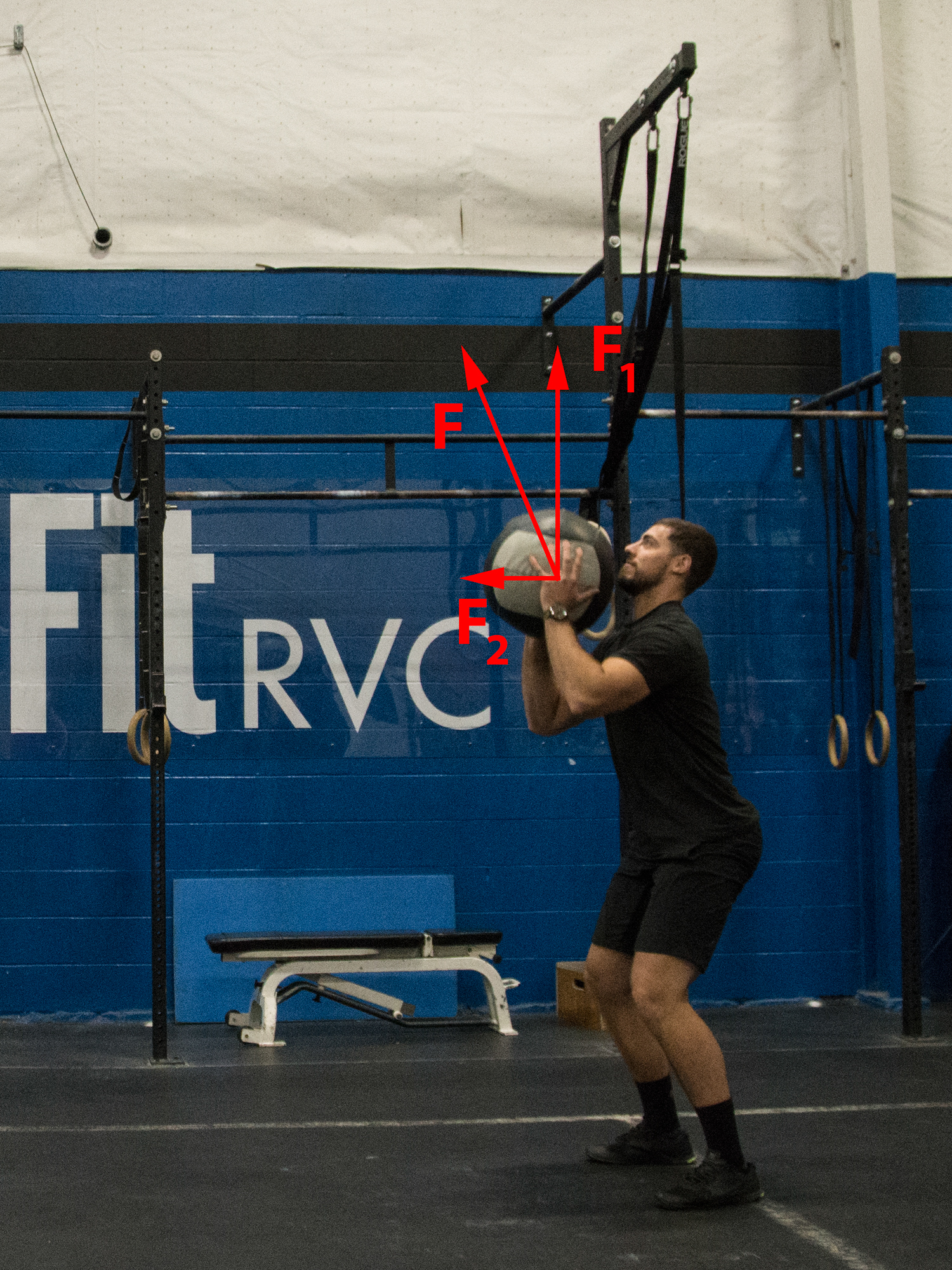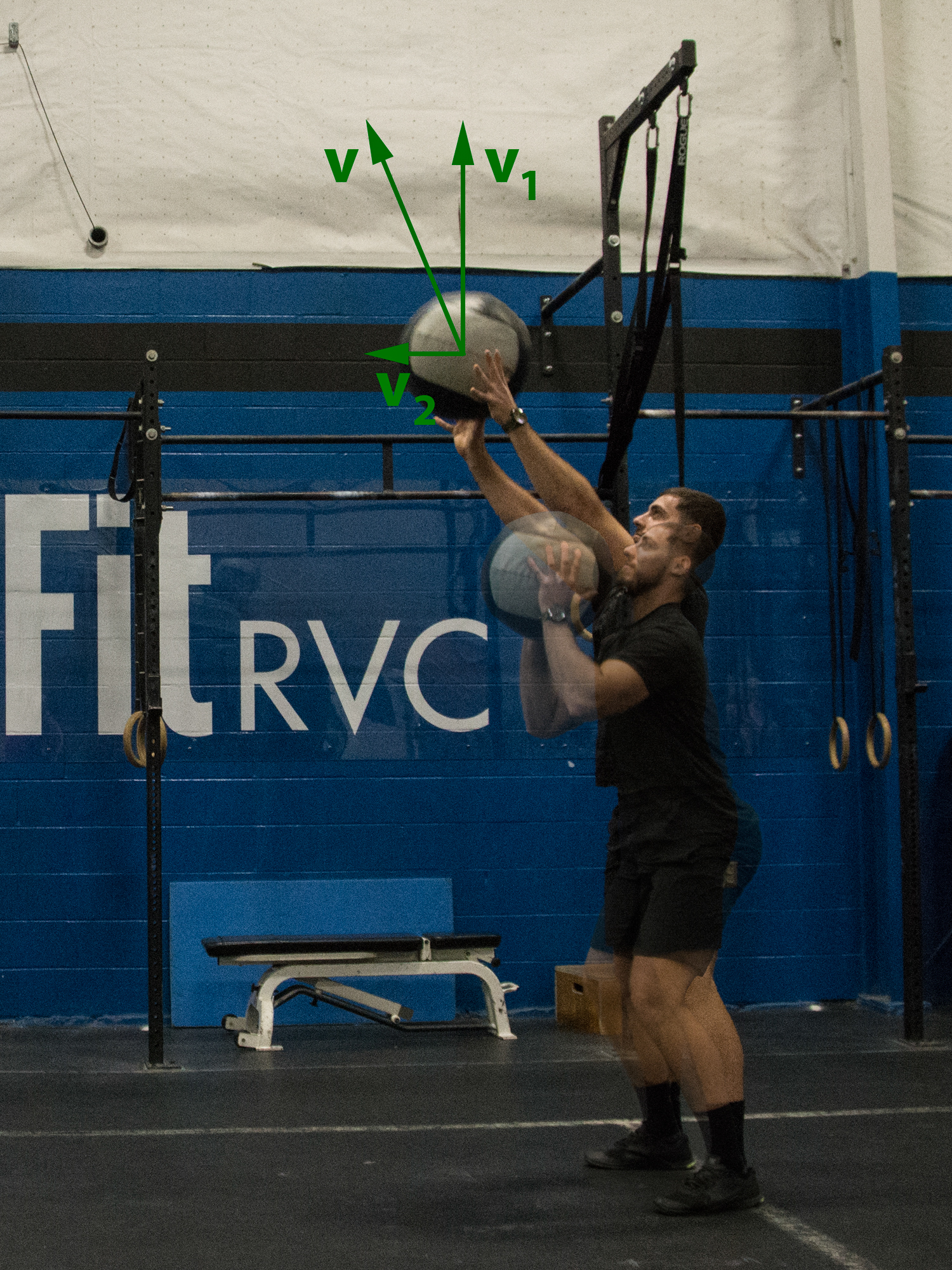GRAVITY
We mentioned earlier that pushing and pulling are two kinds of force. Lifting is also a force. If a bucket of water is sitting on the ground, you have to exert a force to lift it up and to then hold it. To hold it steady, the force you exert upwards balances the downward force, which keeps the bucket normally on the ground. That downward force is the weight of the bucket. In other words, weight is just another kind of force! It is also called gravitational force. Like other forces, it has a direction, which always points straight down toward the center of the earth.
Weight is a force. The letter "W" is often used for this special kind of force.
Weight is related to mass. While your mass is the same on the earth and the moon your weight would be less on the moon than it is on the earth. On earth, there is a simple conversion factor between mass and weight. One kilogram of mass weighs about two pounds. On the moon, one kilogram of mass weighs about one-third of a pound!
According to Newton’s Second Law, when a force is applied, there is an acceleration. When that force is the gravitational force, the corresponding acceleration is known as gravitational acceleration. And what is the direction for this acceleration? Straight down toward the center of the earth!
The gravitational acceleration is pretty much the same everywhere on the planet. It is very slightly less on the top of Mount Everest, since that point is so far from the center of the earth. But for the most part, this acceleration can be counted on to be the just about the same everywhere.
Gravitational acceleration makes it fun to go sledding!
Gravitational acceleration makes you go faster and faster as you go downhill - sometimes too fast!
When you are on a slippery slide, you will accelerate, which means that you will go faster as you go down.
Gravitational acceleration makes you go faster as you go down a slide.
If you like to ski jump, gravitational acceleration will help you go faster before you jump. This means that for each time interval, you will cover more distance than you did before.
Gravitational acceleration makes you go faster - and therefore farther - each time interval.
Projectiles
Gravitational acceleration, which is called "g" for short, plays a strong role in the way objects move on the earth. This is true for objects moving up, down, and even horizontally, as we will learn when we talk about friction. It also influences how objects move through the air. Whenever an object moves freely through the air, it is called a projectile and its motion is called projectile motion.
A projectile is any object that moves freely through space. On earth, projectiles move through the air, but in outer space, they move through nothing at all. There are lots of examples of projectile motion here on earth. A projectile can be a ball, a dog, or a person!
Before we look at the kinds of projectiles shown in these pictures, we will first consider the simple case of throwing a ball straight up above your head. When you do this, the ball's motion (up) is in a direction that is opposite its acceleration, g (down), the gravitational acceleration. If you look at pictures of the ball at some fixed time interval, like every half second, you will see that on its way up, the ball travels less distance each time interval than it did during the previous time interval. In the picture below, the ball travels a shorter distance between time 2 and time 3 than it does between time 1 and time 2. In other words, the ball is slowing down and it eventually stops at time 4 (momentarily, anyway).
When you throw a ball up over your head, it slows down and eventually stops, just for a moment.
What happens next? We all know that the ball changes direction and starts to fall to the floor! As it drops, its motion (down) is in the same direction as its acceleration, g (down). Because the acceleration is in the same direction as the motion, the ball goes faster and faster. You can see this by looking at the space between pictures of the ball at times 4, 5, 6, 7, 8 and 9. The distance the ball travels increases each time interval because the ball is accelerating.
When the ball drops, it goes faster each time interval than it did during the previous interval.
Now suppose you throw the ball upward at a slight angle. While the ball is in your hands, you are exerting a force, F. When you let go of the ball, it has accelerated and has a new velocity, v.
When you exert a force at an angle, it can be separated into two forces, one vertical and one horizontal. These are labeled F1 for the vertical part and F2 for the horizontal part (but they can be called anything). The acceleration can also be separated into vertical and horizontal parts. And because the acceleration leads to a velocity when the ball leaves your hands, that velocity has a vertical (v1) and horizontal (v2) part as well. These two parts of the force (and acceleration and velocity) are called components. It is a lot easier to understand the subsequent motion of the ball if we think about the horizontal and vertical parts (or components) of the force (and acceleration and velocity) separately.
Once you let go of the ball, it becomes a projectile and its path is part vertical and part horizontal.
The path of a ball after it is thrown at an angle toward the ceiling is part up and down (vertical) and part across (horizontal).
The vertical part of the motion is just like the case where the ball is thrown straight up into the air. The ball is subject to gravitational acceleration, g. It therefore travels up while slowing down, stops, then travels back down while speeding up. The horizontal part of the motion is very different. When the ball leaves your hands, there is no more acceleration, so the horizontal velocity doesn't change! During every time interval, the ball moves the same distance in the horizontal direction as it did during the previous time interval.
How high and how far does the ball - or any projectile - go? The height reached by the ball at its turnaround point depends on g, of course, but also on the velocity of the ball as it leaves your hands. Actually, it depends on g and the vertical part of that velocity, which we called v1. The horizontal distance traveled by the ball before it hits the ground depends only on the horizontal part of the velocity, v2. You can see why it makes sense to take things like force, acceleration and velocity and break them up into components in the vertical and horizontal directions. We can figure out the vertical motion and the horizontal motion independently for any moving object.
When you play catch with a friend, the ball is a projectile when it is in the air. Its vertical velocity changes as it moves up and down but its horizontal velocity remains constant.
When you throw a softball, its horizontal velocity is constant. The ball travels the same horizontal distance each time interval because there is no acceleration in the horizontal direction.
The shape of the path followed by the ball in the air is called a parabola. This is true for all projectiles. An arrow shot from a bow, a ski jumper, and a dog jumping into the water are all examples of projectiles and all move along parabolic paths!
In summary, gravity is always part of our daily lives. The pull of the earth on every object on or near the earth's surface is the gravitational force, which we also call weight. The acceleration associated with this force, the gravitational acceleration, is responsible for lots of the motion we see every day. Projectile motion is the special case of objects flying through the air. To describe it, it helps to break down the motion into horizontal and vertical components.












